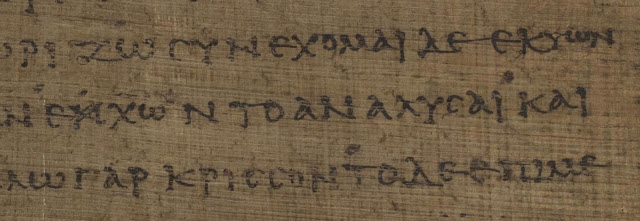 In the latest issue of JBL, Armin Baum has a response to Bart Ehrman on pseudepigraphy. In his big book on forgery in early Christian polemics, Ehrman argues not only that pseudepigraphical texts were intended to deceive (and were regarded as such by readers) and that forgers sometimes thought their deception was divinely sanctioned, but also that a work was considered authentic only if its words, not merely its contents, were the author’s. Baum agrees with Ehrman’s first two points but contests the third. He contends that content is enough to authenticate a work. He summarizes his own view with the following table:
In the latest issue of JBL, Armin Baum has a response to Bart Ehrman on pseudepigraphy. In his big book on forgery in early Christian polemics, Ehrman argues not only that pseudepigraphical texts were intended to deceive (and were regarded as such by readers) and that forgers sometimes thought their deception was divinely sanctioned, but also that a work was considered authentic only if its words, not merely its contents, were the author’s. Baum agrees with Ehrman’s first two points but contests the third. He contends that content is enough to authenticate a work. He summarizes his own view with the following table:| Style | |||
| from the author | from someone else | ||
| Content | from the author | authentic | authentic |
| from someone else | forged | forged | |
After working through his example texts, Baum concludes:
With an eye to these and other ancient statements, I cannot agree with the most innovative contribution of Ehrman’s otherwise very useful book. Ehrman has rightly joined the growing number of scholars who have raised substantial doubts regarding the once-popular thesis of innocent ancient pseudepigraphy. At the same time, his assertion that in antiquity a text’s authenticity was assessed not on the basis of its content but always on the basis of its wording goes one step beyond what the numerous relevant sources reveal.I think Baum’s sources generally support this conclusion. Several also touch on the issue of works published without the author’s explicit consent. So the article is worth reading for an eye beyond just the question of pseudepigraphy. Some of his sources also touch on broader questions about authorship and publication which we discussed on the blog recently.
The article is “Content and Form: Authorship Attribution and Pseudonymity in Ancient Speeches, Letters, Lectures, and Translations—A Rejoinder to Bart Ehrman,” JBL 136.2 (2017): 381-403











